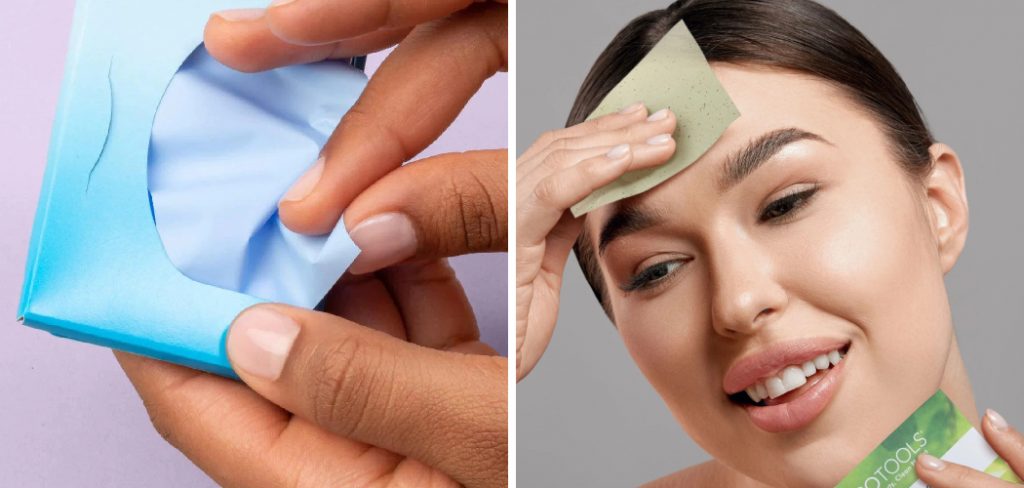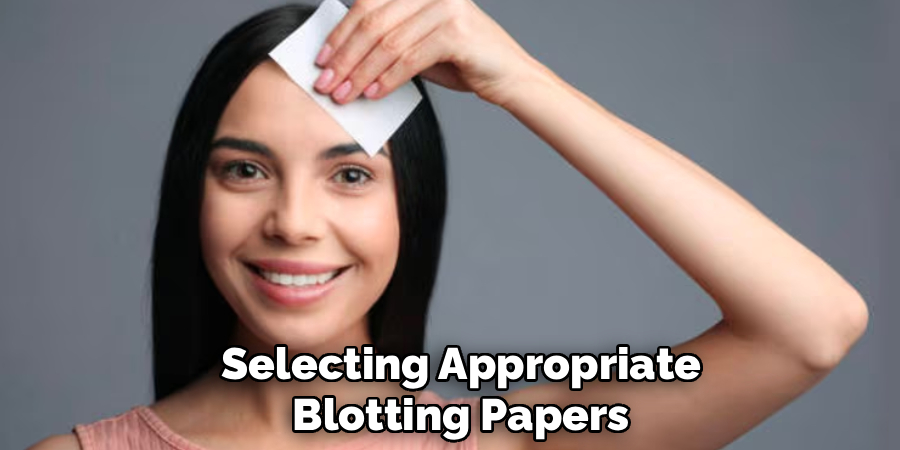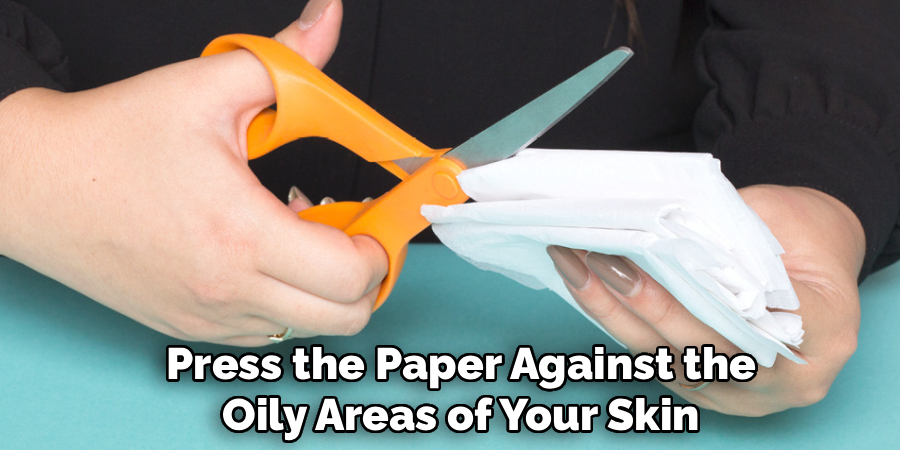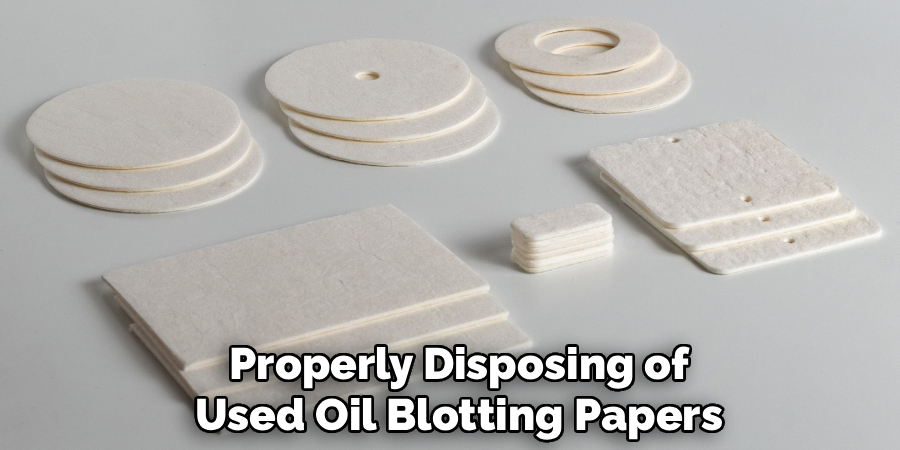Oily skin can be frustrating, especially when your carefully applied makeup starts sliding off your face by midday. Excess oil production leaves many people struggling with unwanted shine, clogged pores, and makeup that won’t stay put. While you can’t completely stop your skin from producing oil, you can manage it effectively throughout the day.

Learning how to use oil blotting paper is one of the simplest and most effective ways to control shine without disturbing your makeup or skincare routine. These thin, absorbent sheets offer a quick solution for removing excess sebum while preserving your foundation and concealer underneath.
Oil blotting papers have become essential tools for anyone dealing with combination or oily skin types. They provide instant relief from unwanted shine while maintaining your skin’s natural moisture balance. Unlike harsh powders or cleansing wipes that can strip your skin, blotting papers work gently to absorb only the excess oil on your skin’s surface.
Why Mastering Oil Blotting Paper Technique Matters
Understanding proper oil blotting technique significantly impacts your skin’s appearance and health throughout the day. Incorrect usage can disturb makeup application, spread bacteria across your face, or fail to provide adequate shine control when you need it most. When used correctly, these simple tools maintain your skin’s natural balance while keeping excess oil at bay.
Proper technique also maximizes the effectiveness of each blotting paper, saving money and ensuring you always look your best. The right approach prevents over-blotting that can irritate skin or under-blotting that leaves unwanted shine visible.
Step-by-Step Guide: How to Use Oil Blotting Paper
Step 1: Choose the Right Oil Blotting Paper for Your Skin Type
Selecting appropriate blotting papers forms the foundation of effective shine control throughout your daily routine. Different skin types require different levels of absorbency and material composition to achieve optimal results. Those with extremely oily skin benefit from highly absorbent papers made from natural materials like rice paper or linen, while people with combination skin often prefer gentler options with moderate absorption capabilities.

Consider your skin’s sensitivity level when making your choice, as some papers contain powders or treatments that may irritate reactive skin types. Premium options often include additional benefits like pore-minimizing ingredients or antibacterial properties that enhance their effectiveness beyond simple oil absorption.
Step 2: Prepare Your Skin Before Blotting
Before using any oil-absorbing materials on your face, ensure your hands are completely clean to prevent transferring bacteria or additional oils to your skin surface. Gently pat your face with a clean tissue to remove any loose makeup particles or surface debris that could interfere with the blotting process.
Avoid touching your face unnecessarily throughout the day, as this transfers oils from your fingers and can exacerbate shine problems. If you’re wearing makeup, be especially careful not to disturb your foundation or concealer during the preparation phase. Check your skin in natural lighting if possible to identify the areas that need the most attention before beginning the blotting process.
Step 3: Identify Target Areas for Oil Blotting
Examine your face carefully to locate the specific areas where excess oil has accumulated, typically concentrating on your T-zone including the forehead, nose, and chin area. Many people also experience oil buildup around the hairline, temples, and sometimes on the cheeks depending on their individual skin type and environmental factors.
Pay attention to areas where your makeup appears to be breaking down or where you notice visible shine that detracts from your desired appearance. Some people find that oil accumulates more heavily on one side of their face due to sleeping positions or phone usage patterns. Understanding your unique oil distribution pattern helps you target your blotting efforts more effectively for maximum shine control throughout the day.
Step 4: Master the Proper Blotting Technique
Remove a single sheet from your oil blotting paper package, handling it carefully to avoid tearing the delicate material. Gently press the paper against the oily areas of your skin using light, even pressure rather than rubbing or dragging motions that can disturb your makeup underneath. Hold the paper in place for 2-3 seconds to allow proper oil absorption before lifting it away from your skin surface.
Use a fresh section of the paper for each area of your face to prevent redistributing absorbed oils to clean areas. Work systematically across your face, starting with the oiliest areas and moving to less problematic zones to maximize the effectiveness of each blotting paper sheet.

Step 5: Apply the Correct Pressure When Blotting
Understanding proper pressure application is crucial for effective oil removal without damaging your skin or disturbing your makeup application. Press the blotting paper firmly enough to make contact with your skin’s surface but gently enough to avoid pushing the paper through your makeup layers. Too much pressure can cause the paper to tear or push absorbed oils back into your pores, defeating the purpose of the blotting process.
Too little pressure results in inadequate oil absorption and ineffective shine control that requires repeated attempts. Practice finding the right balance by starting with very light pressure and gradually increasing until you achieve satisfactory oil removal without makeup disturbance.
Step 6: Check Your Results and Touch Up if Necessary
After completing your initial blotting session, examine your skin in good lighting to assess the effectiveness of your oil removal efforts and determine if additional touch-ups are needed. Look for areas where shine remains visible or where the blotting process may have disturbed your makeup application slightly. If you notice remaining oil in certain areas, use a fresh blotting paper to address these spots with the same gentle technique.
Avoid the temptation to over-blot, as this can lead to skin irritation or excessive dryness that causes your skin to produce even more oil in compensation. Perfect technique for how to use oil blotting paper involves knowing when to stop and allowing your skin to maintain its natural balance.
Step 7: Dispose of Used Papers Properly
Properly disposing of used oil blotting papers maintains hygiene and prevents the spread of bacteria that could cause skin problems or breakouts. Never reuse blotting papers, as they contain absorbed oils and potentially harmful bacteria that should not be reapplied to your skin. Fold used papers in half to contain the absorbed oils before placing them in an appropriate waste receptacle.
Keep a small disposal bag in your purse or makeup kit when you’re away from home to ensure proper disposal options are always available. Some blotting papers are made from biodegradable materials, making them more environmentally friendly disposal options when available in your area.
Step 8: Time Your Blotting Sessions Throughout the Day
Developing an effective timing schedule for oil blotting sessions helps maintain consistent shine control without over-treating your skin or disrupting your daily routine. Most people find that blotting 2-3 times per day provides optimal results, typically mid-morning, after lunch, and mid-afternoon when oil production tends to peak.

Pay attention to your individual skin’s patterns and adjust your schedule accordingly, as some people need more frequent touch-ups while others require less intervention. Environmental factors like humidity, temperature, and activity level also influence how often you need to blot throughout the day. Establishing a consistent routine helps you anticipate when you’ll need oil control and ensures you’re always prepared with the right materials.
Frequently Asked Questions (FAQs)
How Often Should I Use Oil Blotting Papers Throughout The Day?
Most skincare experts recommend using oil blotting papers 2-4 times daily, depending on your skin type and environmental conditions. People with extremely oily skin may need to blot every 2-3 hours, while those with combination skin might only need touch-ups twice daily. Over-blotting can actually stimulate more oil production, so start with less frequent use and adjust based on your skin’s response. Hot, humid weather or physical activity may require more frequent blotting sessions.
Can Oil Blotting Papers Damage My Makeup?
When used correctly with gentle pressure, quality blotting papers should not disturb well-applied makeup. The key is using a light patting motion rather than rubbing or dragging the paper across your skin. Some makeup formulations are more prone to disturbance than others, so you may need to experiment with different blotting techniques. If you notice makeup removal, try using less pressure or switching to a different type of blotting paper that’s gentler on your skin.
Do Different Types Of Oil Blotting Papers Work Better For Different Skin Types?
Yes, various blotting paper materials offer different benefits for specific skin concerns. Rice paper provides gentle absorption perfect for sensitive skin, while linen papers offer stronger oil control for very oily complexions. Some papers include powder coatings that provide additional shine control but may not suit all skin types. Natural materials tend to be gentler than synthetic options, and fragrance-free varieties reduce the risk of skin irritation for sensitive users.
Should I Use Oil Blotting Papers Before Or After Applying Makeup?
Oil blotting papers are primarily designed for use after makeup application to control shine throughout the day. Using them before makeup can be helpful if you have excess oil, but make sure to follow with your regular skincare routine before applying foundation. Most people find blotting most beneficial 1-2 hours after makeup application when natural oil production begins to create unwanted shine through their foundation and concealer layers.
Are There Any Ingredients In Oil Blotting Papers I Should Avoid?
Some blotting papers contain powders, fragrances, or other additives that can irritate sensitive skin or cause allergic reactions. Avoid papers with strong fragrances if you have reactive skin, and be cautious of papers containing talc or other mineral powders that might clog pores. Natural materials like rice paper or linen are generally the safest options for most skin types. Always read ingredient lists if you have known sensitivities or allergies to specific cosmetic ingredients.

Conclusion
Mastering how to use oil blotting paper transforms your daily skincare routine by providing instant shine control without compromising your makeup or skin health. This simple technique offers an effective solution for managing excess oil production while maintaining your skin’s natural balance throughout the day.
Quality blotting papers combined with proper technique provide professional-level shine control that keeps you looking confident and polished from morning until night. Incorporate this simple tool into your daily routine and experience the transformative effects of effective oil management for healthier, more comfortable skin.
About the Author
Jane Hubbard is a passionate beauty expert with a wealth of experience in makeup, hair, and overall beauty techniques. After years of working as a hairdresser specialist, she followed her entrepreneurial spirit and started her own consultancy business.
Jane has always been driven by her desire to help others feel confident in their own skin, and she does this by sharing her knowledge, experiences, and practical beauty tips. Through her consultancy, she empowers individuals to embrace their unique beauty, offering tailored guidance that boosts both self-esteem and personal style.
Professional Focus
- Specializes in makeup, hairstyling, and beauty consulting.
- Provides personalized beauty advice, tips, and techniques to help individuals feel confident in their appearance.
- Dedicated to staying up-to-date with the latest industry trends and developments.
- Passionate about creating a comfortable and empowering experience for every client.
Education History
- University of Craft and Design – Bachelor of Fine Arts (BFA) in Woodworking and Furniture Design
- Woodworking Apprenticeships – Extensive hands-on training with skilled craftsmen to refine carpentry and furniture making techniques
- Online Courses & Masterclasses – Continued education in advanced woodworking techniques, design principles, and specialized tools
Expertise:
- Makeup artistry, hairstyling, and beauty consulting.
- Personalized beauty techniques to enhance confidence and self-expression.
- Educating clients on how to maintain their beauty routines at home.
